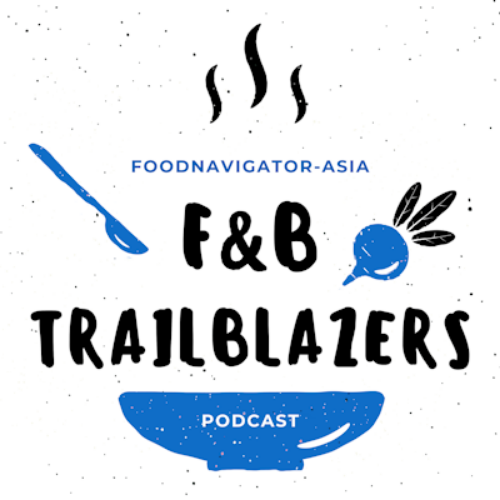‘A major milestone for the food industry …’ FDA approves Sensient’s ‘exceptionally heat-stable’ natural blue food color from butterfly pea flower

The “exceptionally heat stable” color can be used in a wide range of applications including alcoholic drinks, sports drinks, carbonated soft drinks, fruit drinks, coffee creamers, ice cream and frozen dairy desserts, fruit preparations in yogurt, chewing gum, coated nuts, and candy, Sensient global director of marketing David Rigg told FoodNavigator-USA.
“It’s a very big deal because color additive approvals are like rare birds, they don't happen very often.”
While Sensient has historically supplied the blue color to a small number of customers as a vegetable juice, getting the official thumbs up as a color additive from the FDA will give larger food and beverage companies the confidence to use it, he said.
“We still think it would qualify under the Code of Federal regulations as a vegetable juice. But we made the decision to file a color additive petition in 2018.”
Other sources of natural blue color
Right now, when it comes to natural blues - which can be used as blue shades but also as building blocks to create naturals greens and purples when combined with other natural colors – US formulators don’t have a ton of options, said Rigg.
According to the FDA’s list of color additive petitions under review, Ecoflora SAS recently filed a color additive petition for a natural blue from jagua, a tropical fruit also known as huito; while a petition is also in the works to secure approval for natural blue from Gardenia fruit. A third petition has also recently been filed for a blue color from a type of algae called Galdieria sulphuraria.
While spirulina extract was approved as a blue food color for candy and gum in 2013 and in a far wider set of applications in 2014, it “doesn’t have the same heat stability” as butterfly pea flower, and “doesn't do very well in in high water activity applications like beverages,” he claimed.
“It’s a little bit frustrating for the whole industry that there isn't a more streamlined process for getting new natural colors approved,” added Rigg, who said it had taken three years for the FDA to give butterfly pea flower extract the thumbs up.
Impossible Foods, which filed a color additive petition at a similar time (late 2018), got the green light just a few months later in July 2019, with the FDA moving at “lightning speed,” said Rigg, although this was possibly explained by the fact that the agency had already reviewed much of the same data in the company’s GRAS notification for the same ingredient, he speculated.
An incredibly vibrant denim blue shade'
So what is butterfly pea flower blue like to work with?
The water-soluble color delivers an “incredibly vibrant denim blue shade” (closer to the synthetic FD&C Blue #2 than Blue #1) in products at a pH above 3.8 and a more purple hue in low pH products such as sport drinks, said Rigg. “In low pH beverages in particular like sports drinks or in fact a lot of soft drinks, or even alcoholic beverages, it'll be a beautiful deep purple shade. And then in the neutral pH range, it will be more of that denim ‘blue two’ shade.”
Dave Gebhardt, senior director of technical services, added: “It’s one of the cleanest, brightest purples we have, even better than some synthetic colors, and we don't see any type of precipitation or anything else across the pH range, it’s light-stable, and it’s really the first legitimate heat stable blue on the market.”
Combined with something like turmeric, it can also “create a nice dark green” shade, he said.

'This has been a project for our agronomy team for a number of years'
While the butterfly pea flower is not hard to grow, said Gebhardt, it’s "not a big commercial crop," and Sensient has worked with farmers at source both to secure supplies and develop plants with higher yields.
“We're continuing to build that supply chain to make it ready for large scale food manufacturers to use as a color. So we source the petals from Southeast Asia and then do the extraction at one of our facilities in Europe.
“This has been a project for our agronomy team for a number of years; we have the largest genome collection for butterfly pea flowers, so we work directly with farmers to be able to provide them with the best seeds for flowers and then there’s been a lot of work on the processing side… how do we get those petals in a position so that we're not losing color.”
Colors via microbes, instead of plants
Asked whether Sensient expected more natural colors to be produced via microbial fermentation rather than extracted from plants in future, he said: “It’s an arena that we're very aware of, we’re having conversations with lots of people regarding this, so we do see this as a growing space, although there's still some challenges to making this commercially viable.
"But there is a tremendous amount of investment and resources going into this now, and it's something [in which] we are actively engaging."
Read the FDA final rule on Sensient’s color additive petition, which explains that Sensient supplied data from scientific literature, coupled with 28-day and 90-day rat studies, multiple in vitro tests, data from human clinical studies of anthocyanins including delphinidin, the extract's major coloring component, and data suggesting that while it contains some protein, it is "extremely unlikely" they could act as allergens.











